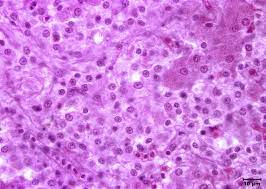Edwardsiella ictaluri
Classification
Domain: Bacteria. Phylum: Pseudodomonadota. Class: Gammaproteobacteria. Order: Enterobacterles. Family: Hafniaceae. Genus: Edwardsiella.
Species: E. ictaluri
|
NCBI: [1] |
Genus species
Description and Significance
Edwardsiella ictaluri is a rod shaped, gram negative bacteria. They are small and motile, and anaerobic. It is typically found in freshwater and marine environments, typically present in the rivers of Japan, effecting Catfish, specifically channel catfish. It is found in the intestines of humans after eating an affected fish. When found on catfish, it is characterized externally by inflamed hemorrhagic foci on the skin which causes ulcers. This organism is important because of where it is found. Since we are in a coastal region, surrounded by oceans and channels/rivers, this bacteria could be found near us. It also impacts a food that our region eats often, catfish. This organism is very complex as well.
Genome Structure
Edwardsiella ictaluri Genome shows 43,378 bp in length with 2615 core genomes. It contains 5592 pan genes and one circular chromosome. The chromosome contains 3,630,639 base pairs. An interesting fact is that this bacteria is known as "hole in the head" and when it is found on catfish, they are called "hole in the head catfish". This microbe contains 59 hypothetical proteins and 12 predicted proteins.
Cell Structure, Metabolism and Life Cycle
Edwardsiella ictaluri is a gram-negative bacteria. It has a flagella, allowing movement. It is anaerobic, meaning that it makes energy without oxygen. This bacteria distinctly produces hydrogen sulfide.
Ecology and Pathogenesis
Edwardsiella ictaluri are found in freshwater and marine environments. The Edwardsiella ictaluri creates a parasitic relationship with catfish and fish (in some cases humans). Its biogeochemical significance is that it produces hydrogen sulfide, which adds to acidic deposits in water and soil. Edwardsiella ictaluri does not contribute much to the environment, other than controlling the population of catfish and certain fish species. This organism causes disease such as meningitis, peritonitis, osteomyelitis, endocarditis, and more in humans. This can be caused when the microbe enters an open wound, or the infected fish is ingested. In fish, it just enters the body through the water. It has human hosts when the human enters infected waters or ingests the infected fish. Symptoms for humans include hemorrhagic gastroenteritis, edema, ascites, exophthalmos, and abnormal behavior. In fish, symptoms include hemorrhagic foci on skin, ulcers, and open wounds.
References
Wikimedia Foundation. (2023, August 13). Edwardsiella Ictaluri. Wikipedia. https://en.wikipedia.org/wiki/Edwardsiella_ictaluri
cooney, s, o’brien, s, Iversen, C., & Fanning, S. (2014, January 13). Bacteria: Other pathogenic Enterobacteriaceae – Enterobacter and other genera. Encyclopedia of Food Safety. https://www.sciencedirect.com/science/article/abs/pii/B9780123786128001049
Actor, J. K. (2012, March 21). Clinical bacteriology. Elsevier’s Integrated Review Immunology and Microbiology (Second Edition). https://www.sciencedirect.com/science/article/abs/pii/B9780323074476000120
Hirai, Y., Asahata-Tago, S., Ainoda, Y., Fujita, T., & Kikuchi, K. (2015, November). Edwardsiella tarda bacteremia. A rare but fatal water- and foodborne infection: Review of the literature and clinical cases from a single centre. The Canadian journal of infectious diseases & medical microbiology = Journal canadien des maladies infectieuses et de la microbiologie medicale. https://www.ncbi.nlm.nih.gov/pmc/articles/PMC4692300/#:~:text=Extraintestinal%20infections%2C%20such%20as%20endocarditis,have%20been%20reported%20less%20frequently.
Yasuike, M., kai, wataru, Nakamura, Y., & Fujiwara, A. (2014, April 3). Genome sequence of fusarium graminearum isolate CS3005. https://journals.asm.org/doi/10.1128/genomeA.00227-14
Yasuike, M., Kai, W., Nakamura, Y., Fujiwara, A., Kawato, Y., Hassan, E. S., Mahmoud, M. M., Nagai, S., Kobayashi, T., Ototake, M., & Nakai, T. (2014, April 3). Complete genome sequence of the edwardsiella ictaluri-specific bacteriophage pei21, isolated from river water in Japan. Genome announcements. https://www.ncbi.nlm.nih.gov/pmc/articles/PMC3974935/
U.S. National Library of Medicine. (n.d.). Taxonomy browser (Edwardsiella ictaluri). National Center for Biotechnology Information. https://www.ncbi.nlm.nih.gov/Taxonomy/Browser/wwwtax.cgi?mode=Info&id=67780&lvl=3&lin=f&keep=1&srchmode=1&unlock
Author
Page authored by Emily Smith, student of Prof. Bradley Tolar at UNC Wilmington.

